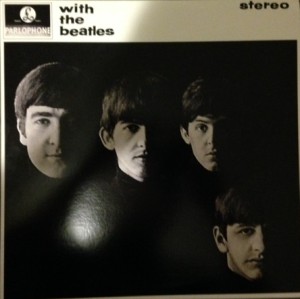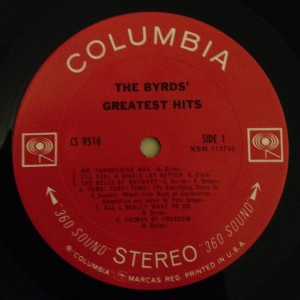Welcome to another vinyl installment of Bill’s Bologna. Let’s get right into it.
Updates:
Stephen Kellogg: Blunderstone Rookery– Still no word on when that’s coming in. It’s still processing.
Hanson: Anthem– Over the weekend, after almost a month of nothing, I started to get my USPS notification emails. Everything happened all at once & the record came in last night.
The Beach Boys: Pet Sounds– I ordered it last week. It just recently came in. I’ve listened & believe me, I am extremely excited post my review of this one.
Record #4- Stephen Kellogg & the Sixers: The Bear
Let’s get to it.
This album is one of my favorites. I love Stephen Kellog & the Sixers, or, as their fans affectionately call them, Sk6ers. They’re one of my favorite bands out there. The first time I found out about them was when they opened up for Hanson at the Calvin Theater in Northampton, Massachusetts, back in 2008. For those of you who are scratching your heads, yes, they’re the same kids who did “Mmmbop.” More on that in another post. Anyway, frontman, Stephen Kellogg stood center stage with Blue Jean, his Gibson Southern Jumbo, while the band playd along behind him. I was instantly hooked & inspired by his acoustic playing style & folk rock arrangements. Wasting no time, I hopped onto iTunes & bought his most recent release, Glassjaw Boxer. I loved it, but unfortunately, I didn’t get to see him live again until just before his next release, The Bear.
The Bear was released on my birthday in 2009 & sounds like a much different album. There’s more of a country influence & it’s definitely grittier. Less polished production is someting I really tend to like, so it goes without saying that when I had the opportunity to buy it in LP format, I was really excited to see how it sounded.
Cover Art:
The Bear’s cover art is pretty ornate. It has a cartoon picture of a bear’s back in front of a blue & white drawing of what looks like an old fashioned New York City. “Stephen Kellogg and the Sixers / The Bear,” is written is sprawling script across the top of the art. The artist made it look like an old music poser. It looks aged, like it’s been hanging in the window of a small concert venue for years. They did a wonderful job.
Sound:
Stephen Kellogg is an audiophile & always releases his albums on vinyl. When he does this, he gives the vinyl buyers a special treat. The records usually come with different mixes & bonus tracks. On this one, it’s a beautiful song called “May Day.”
There’s only one problem with this record, but it’s huge.
When I picked up the jacket with record still inside, it felt a little light. I opened it up & there were the sleeve & disc, just like they were supposed to be. When I slipped the record out of its sleeve & gently tuned it over to see both sides, it felt very thin. The previous records I’d bought had some density to them, but this felt very flimsy. Oh well, it was time for a listen. I set it spinning on my turntable & went to lie down on my bed. It opened with the title track, “The Bear.” I was really looking forward to hearing it because instead of a bass guitar, they use a tuba. It sounded great & met my initial approval. When the instrument kicks in, in the second verse, it really stands out. It’s the perfect addition to round out the sound in a very intriguing way. The next track “A (Wth Love),” a very country sounding track was fine. Shady Esperano and the Young Hearts,” their most upbeat song, also sounded great. The rhythm section was full & played perfectly into my ears, but after that song, the trouble started.
As I was lying there, Kellogg’s song, “Oh Adeline,” came on. This was the other song on album I was excited to hear. Unfortunately, this is where it all went wrong. About a quarter of the way through the song, it started to warble.* The speed of the songs sounded like it was fluctuating a little bit. It wasn’t a ton, but it was just enough to be annoying. At first, I thought I had somehow broken my tuntable, but when I got up to look, it turned out that the record was warped.** It was confirmed when the same exact thing happened on the other side.
Now, make no mistake, this was not a problem with the mix. The warping was definitely there & it was easy to see. As the record played, the warped waves in the vinyl disc caused the tone arm to visibly rise & drop.. The reason the sound was shaky was because as the needle runs up a lump in the vinyl, it slows down, playing back the audio at a slower rate, but as it runs down the other side, gravity takes over & lets it drop down through the groove. As a result, it moves slightly faster, speeding up the playback.
It could have been a pressing problem at Vanguard, or the vinyl may have been cheap. It was thin, but I doubt bad pressing was the case. Independent labels release a good amount of vinyl to people who care about it. I don’t think they would let too many bad records get by them. That leaves poor storage or bad transit handling. Remember, it was pressed in 2009 & if it was on its side, warping definitely would occur. It also could have been lying under something on the truck, but it doesn’t matter how it happened; it’s still a problem, regardless.
I was very disappointed becase I’d waited for a long time to get this one in. I have yet to decide what to do with it. I may replace it & if I do, I know I won’t be ordering from that store again.
All warping aside, The Sixers did a great job recrding & mixing this one. The alternate mix is incredible on the unhurt tracks & the arrangements are just as great as I’d hoped. Unfortunately, the bonus track, “May Day,” fell victim to the warping & I didn’t get to listen to that one the way I wanted. I look forward to when I can.
Anyway, that’s about it from me today. I need to catch up on the new records I’ve gotten, but after that, you’ll get a word post from me. I promise.
*Stop it. No, it’s not the “wa-wa-wa-wa-w-w-w” you hear in dubstep. This was a problem with the playback speed.
**Just to be sure, I tested all of my other records, & not one of them played as poorly as this one.











